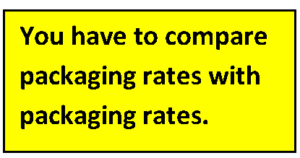In the course of an otherwise interesting article on Individual Producer Responsibility (IPR), Tom Chervinsky makes a statistical boo-boo. See, I am mellowing. I didn’t call it package bashing.
Chervinsky is certainly not the first, and won’t be the last, to play footsie with the facts. He starts out well, observing that the percentage of waste that Ontario diverts from landfill has remained stagnant for the last 20 years. The most recent Statistics Canada survey (2012) pegged it at 24 per cent.

But then he asks us to compare Ontario’s low number with the claimed packaging recycling rates for Germany, the Netherlands, and the United Kingdom. Whoa already! You can’t compare the Ontario diversion rate for all wastes (paper, organics, white goods, electronics, construction, renovation, and demolition materials, plus tires and other stuff) with some countries’ claim for a single category such as packaging. You have to compare packaging rates with packaging rates.
And there, Ontario, and Canada, have a problem. Because we don’t know the current diversion or recycling rates for packaging in this country. The most comprehensive survey ever conducted specifically on packaging in Canada is now almost 20 years old. We can debate its validity today, and certainly there have been changes in packaging usage over the years (less glass and more plastics). In fact, this issue of packaging recycling rates in Canada is a well-travelled road. We have taken both Ontario and Canada’s Ministers of the Environment to task for similar misuse of available data in the past.
So what can we say about packaging recycling rates in Ontario or Canada? Our alternatives seem to be to quote the 1996 National Packaging Survey which estimated that over 70% of packaging was being re-used or recycled, and that industry (not households) was doing most of it (91%). Or we can apply those 1996 per capita rates to current populations while recognising the statistical cautions that arise in doing so.
But what we cannot do, as Mr. Chervinsky has done, is blindly assume that packaging‘s recycling rate is the same as that of all other materials in the waste stream (white goods, organics, tires). Besides, some data, and admittedly anecdotal evidence, suggests that Canada may, in fact, be doing as well as, if not better than, many of its European cousins on the packaging recycling front. But that’s a whole other blog.
